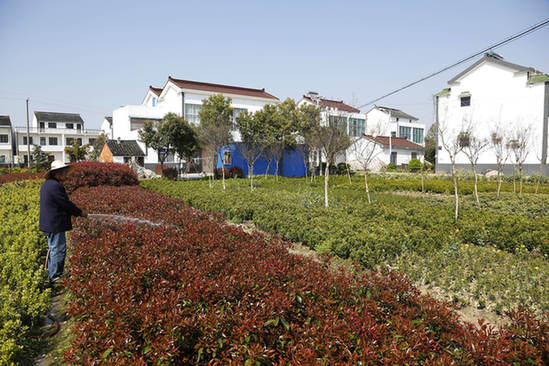Urban-Rural Integration Reform in Progress
Equal Access to Public Services
At the national educational work meeting on January 15, 2014, Education Minister Yuan Guiren told participating officials that China will make overall arrangements for compulsory education resources (totaling nine years from primary school to junior middle school) in urban and rural areas to ensure their even distribution, and improve school facilities and teaching quality in the countryside. The state will increase funding to rural primary and junior middle schools that fall below standard as well as subsidies for rural students, the minister said.
In addition to education, China is also working to give rural residents access to employment, public services and social security equal to that of city dwellers. This will level the ground for all citizens to equally participate in the modernization drive and enjoy its fruits. This is the ultimate goal of the urban-rural integration reform.
Chengdu, capital of Sichuan Province, was the first city in China to abolish the hukou household registration system that classifies residents as either “urban” or “rural.” Starting in 2004, all permanent residents in the city were registered as simply “resident.” This change was applied to the whole local population by the end of 2006. The institutional obstacle to farmers’ enjoying equal access to public services was thus effectively eliminated.
Under the new policy, though no longer tagged “rural residents,” farmers can retain the right to use their contracted lands and entitlements to the collective assets of their respective villages. Those who voluntarily relinquish their assigned homestead in the village and move into cities and towns are eligible for public housing.
Changsha City of Hunan Province took the lead in administering unitary medical insurance for its urban and rural residents. This practice has the merits of placing insurance funds under uniform management, collecting and publishing information on a single platform, and allowing the same payment policy for all insured, which contributes to social justice.
In 2012, the medical insurance schemes for Changsha’s urban and rural dwellers were fused into one. This change significantly expanded the range of medical services and providers as well as medications covered by the insurance for rural residents. In Changsha County, for instance, rural policyholders are entitled to 2,421 medicinal products, almost double the previous 1,300, that are paid for by their insurance, and 68 local hospitals have joined the insurance plan.
Social changes always take place in tandem with economic transformation, manifest in the gap between China’s urban and rural development. This chasm is apparent in education, health care, social security and other realms. The overriding priority of China’s urban-rural integration reform is to close this gap and realize balanced development in its cities and countryside.
|
 |
|
A new rural community in Shangbu Village, Changzhou City, Jiangsu Province |
